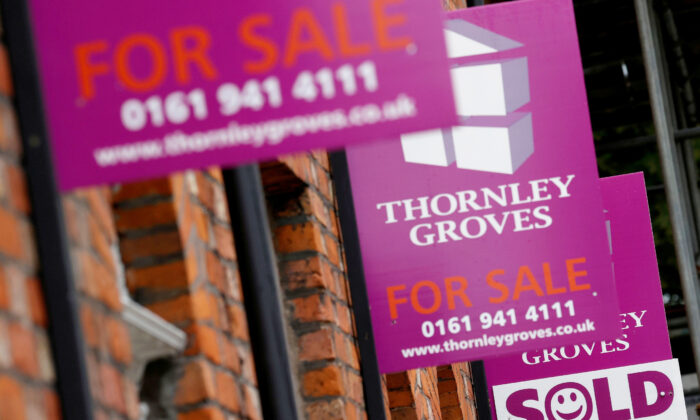UK house prices grew 1.7 percent in July compared to June as activity bounced back, according to figures released by the Nationwide Building Society on Friday.
House prices may, however, fall again as labor conditions worsen later in the year, experts warn.
July’s monthly gain, after seasonal adjustments, recovered the ground lost in June when housing prices dropped 1.6 percent. Overall, the annual growth rate stands at 1.5 percent (pdf).
“The bounce back in prices reflects the unexpectedly rapid recovery in housing market activity since the easing of lockdown restrictions,” Robert Gardner, Nationwide’s chief economist, said in a statement.
Pent-up demand is coming through. Nationwide’s earlier research found that some people began to reassess their housing needs and preferences during lockdown. Around 15 percent of people surveyed in May (pdf) were considering moving as a result of life in lockdown.
The UK was under strict lockdown for three months from late March to June to try to prevent the spread of the CCP (Chinese Communist Party) virus before a multi-phased easing began in England from early July.
Stamp Duty Holiday
The UK government temporarily reduced Stamp Duty Land Tax on residential property purchases from July 8 until March 13, 2021, inclusive. Buyers only start to pay stamp duty on the amount above £500,000. This relief applies not just to first-time buyers, but also to all home movers.
The nine-month stamp duty holiday provides the greatest savings for those in London and South England where average house prices are significantly higher, Nationwide’s research found.
It is estimated around 90 percent of owner-occupier transactions in England will pay no stamp duty under this holiday scheme. The stamp duty holiday is expected to provide further support to the housing market in the near term, Gardner said.
Estate agents are seeing an increase in interest from buyers.
For example, David Hill, director of sales for March & Parsons in Chiswick, West London, told prospective customers in a recent letter that new buyer registrations in June were up 36 percent compared to June 2019, something he attributed to the temporary reduction in stamp duty.
Hill also said that it was looking to be a busy summer, with full asking prices being achieved and properties now moving faster on the market.
Axe Waiting to Fall
However, with the government-sponsored furlough scheme coming to an end in October, labor market conditions are expected to weaken and will dampen housing market activity for a time again, Gardner warned.
The UK’s biggest mortgage lender, Lloyds, also gave a bleak outlook on house prices in 2020 based on several models (pdf). In its best-case scenario, the “upside model” where GDP falls 9.5 percent on a yearly basis and unemployment is at 7.1 percent, the lender predicts UK house prices will be set back 3.7 percent in 2020. House prices would see a growth in subsequent years under this scenario.
In its worst-case scenario, the “severely downside model” where GDP shrinks 10.9 percent for the whole year and unemployment is at 7.5 percent, the lender estimates UK house prices will retreat 9.5 percent in 2020. House prices would continue to fall in subsequent years under this scenario.
Its base case scenario predicts a 6 percent fall in house prices in 2020 before starting to make a recovery in subsequent years.
Lloyds has granted 1.1 million mortgage payment holidays to borrowers during the CCP virus pandemic, and made a bad loan charge of 2.4 billion pounds ($3.1 billion) in the second quarter.
Focus News: UK House Prices Picked Up in July, May Drop in Late Autumn
